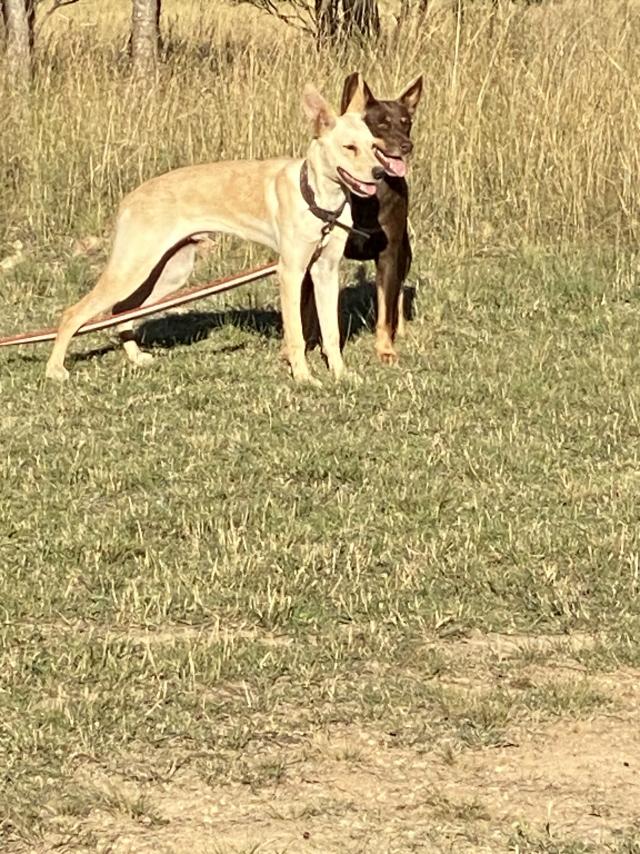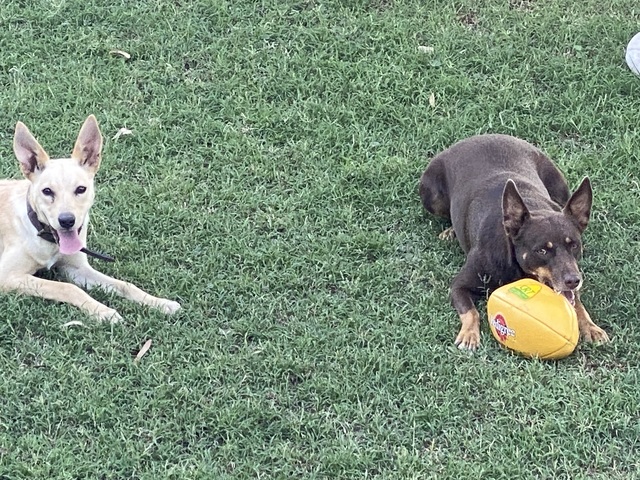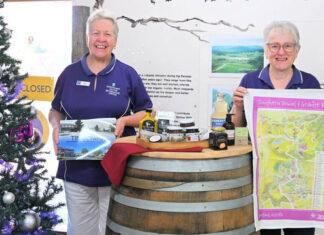Bang, bang, bang, I heard. The new tractor (secondhand new) had arrived only yesterday and Richie was eager to try out his new toy and so off he went slashing. The bang, bang, bang was the rocks he had obviously struck. A few minutes later I saw the tractor returning up the driveway and Richie park up. I went out, surprised he was back so quickly. He was holding a mangled piece of PTO shaft in his hand. I didn’t say a word but as I looked up I noticed the back windscreen had a big crack. As well as this, the beams that hold the blades were badly damaged. Quite an expensive three laps around the paddock.
The guests were a lovely Indian guy with his parents and best mate. They clapped with delight when I arrived home from work and went over to greet them, followed by Crystal the dog, six Muscovy ducks, a Khaki Campbell drake and a peacock. “We came to go apple picking and just wanted somewhere to stay – we never expected this,” they said to me. “As good as the apple picking was, this is the highlight of our visit to Stanthorpe.” I had a quick chat and still smiling when I walked away with my menagerie that smile was quickly wiped from my face when I saw that Duck and Co had left a great many deposits on the cottage verandah.
Sunday, 16 February: I woke up this morning and wandered outside with my coffee to feel a change in the air. It was fresher and as the day wore on, the sky was crisper then it has been. I have noticed the ever so slightly shortening days of late. At Glenlyon we are generally four degrees warmer than Stanthorpe, winter and summer, and are situated at 452m, compared to Stanthorpe’s 900m, so the change of season always starts there a bit before we notice it.
I attended the Stanthorpe Show again this year, taking a display of rare breed sheep along. As per the last two years, the stars of the display were Zig Zag and Louis, the two Damara wethers. Also along for the show were Marilyn Shropshire, a couple of Southdowns and Babydolls, and an English Leicester.
It was interesting talking to a guy who lived in the region of South African where Damaras are common and he remarked that the sheep don’t grow as big over there. I also met Stacey, the new sales person from Riverina Stockfeeds, who sponsor part of the sheep section, and she has also hopped on board with some feed donated to this year’s auction.
Speaking of this year’s auction, I was feeling a bit anxious that, after sending out around fifty personalised emails for sponsorship and donations, I had only received three responses. I was listening to podcasts on the way home from work recently and the one I listened to that day was about promotion of small business and entrepreneurs. Advice given was that for every 100 letters you send out if you receive one reply you can consider yourself lucky!
The podcast was good timing. I guess I will just keep trying. It’s about building relationships. I don’t believe in just sending out generic emails asking for support for the auction – I try to link the business I am sending the email to to the Rare Breeds Trust. If you are reading this, be you an individual or a business of any size, our auction raises funds for a Genebank for Future Farming Generations. Most countries have one but Australia does not. All funds go into maintaining the genebank. There are no administrative or other costs as the RBTA is run entirely by volunteers.
Back on the farm the speargrass has been really bad this year and I have shorn the sheep early, last week in fact, to try to reduce the impact. Normally we would slash a fair percentage of the grass but the old John Deere has been relegated to the Garden Ornament section of the farm and the slasher is smashed.
After reading Hugh Tindall’s book, The Back of Beyond, in which he described a mob of Merino sheep badly affected by speargrass that ended up having to be slaughtered, I was about ready to give up on the sheep business and move over to cattle. Speargrass’s barbed seeds work their way through the wool into a sheep’s skin and deeper into the body causing quite severe discomfort to the sheep. We are going to try a combination of slashing and running more cattle before the sheep, as well as spraying bad patches, and see how it goes from there.
The farm’s menagerie seems to be in growth mode at the present time despite the fact that my aim was to cut back due to time constraints! Australia Day at the Highfields Pioneer Village saw us come home with three Pygmy goats and one Khaki Campbell drake in the back of the Pajero! Guests visit the farm primarily to engage with the animals, so I justify these knee-high goats as they can’t get out of the fences, unlike the other goats that run up stays or push through a fence, if it gets dry they don’t need much feed, and the littler guests are not intimidated or scared off by these pint sized weed eaters. The drake was for the ducks that persist on sitting on infertile eggs.
The very next week I brought home Polo, a young yellow Kelpie, that I picked up from the Stanthorpe Show by prior arrangement. It probably was not the best timing. I walked him over to the sheep pavilion from the sheep dog section and the older wool steward said to me, “You can’t bring a dingo into the sheep pavilion.” He wasn’t joking either! I did explain he was a yellow kelpie and they were quite common these days but I don’t think he believed me! I was later to be approached by several other show patrons asking me if he was a dingo!
Reminder – the RBTA Youth Microgrant applications close at the end of February. Please check the website for details.







